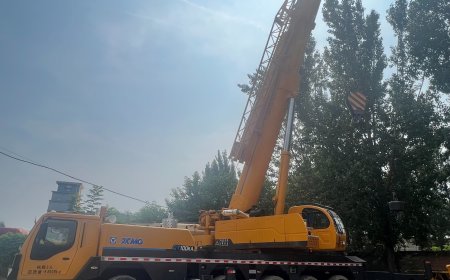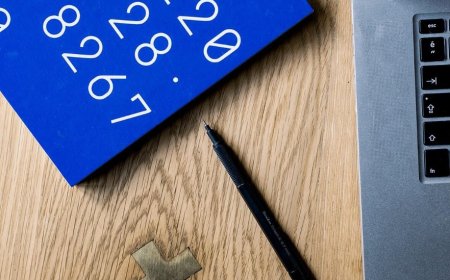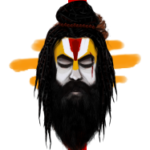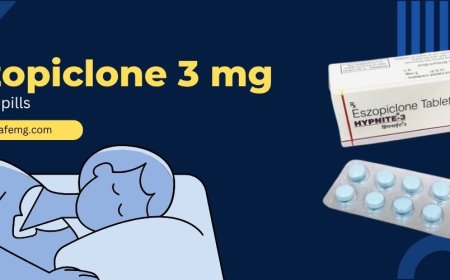Recovering from a Lumbar Strain: Symptoms and Solutions
Understand lumbar strain symptoms and discover easy recovery solutions. Learn how Pain O Soma 350mg with Carisoprodol helps reduce muscle pain for faster healing and better mobility.
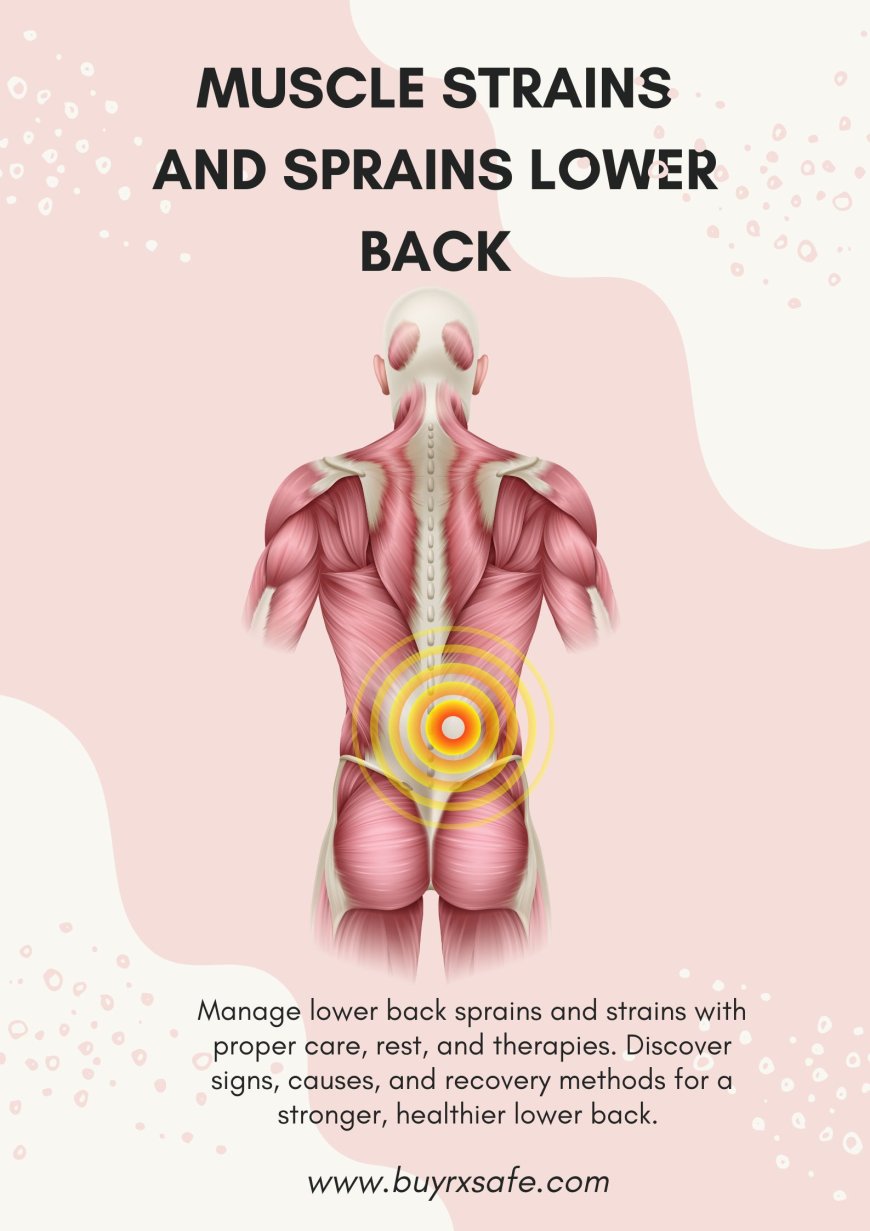
What Is a Lumbar Strain?
A lumbar strain refers to an injury of the muscles or tendons in the lower back. This condition usually happens when muscles stretch too far or tear. People often experience this injury during sports, lifting heavy objects, or sudden awkward movements. The lower back muscles support the spine and allow movements like bending or twisting. When these muscles are strained, pain and stiffness follow.
Pain O Soma 350mg and Its Role in Recovery
Pain O Soma 350mg is a muscle relaxant that helps manage pain from lumbar strain. The active ingredient is Carisoprodol, which works by blocking pain signals between the nerves and the brain. It provides relief from discomfort and helps muscles relax. Patients can use this medicine as prescribed to ease muscle spasms, improve mobility, and support physical therapy efforts. Carisoprodol also helps reduce anxiety caused by chronic pain and allows for better rest.
Causes of Lumbar Strain
Sudden Movement
Lifting something without proper form or twisting the body too fast can stretch back muscles.
Repetitive Motion
Constant bending, pulling, or heavy lifting can stress the lumbar area.
Poor Posture
Sitting or standing incorrectly for long periods strains the lower back.
Weak Muscles
Lack of exercise weakens the back and abdominal muscles, making strains more likely.
Accidents
Falls or direct blows to the back can result in muscle tears or ligament damage.
Common Symptoms
Sharp Pain in the Lower Back
Pain may appear suddenly and get worse with movement.
Muscle Spasms
Back muscles may tighten without warning, causing discomfort.
Stiffness
Limited range of motion in the lower back area.
Difficulty Standing
Standing upright can be painful due to muscle tension.
Pain After Activity
Symptoms may worsen after physical activity or at the end of the day.
Diagnosis of Lumbar Strain
Doctors perform a physical exam and ask about the patients symptoms. They may check muscle strength and flexibility. Imaging tests like X-rays or MRIs are only needed if symptoms last too long or suggest another issue like a herniated disc.
Effective Solutions for Recovery
Rest
Short-term rest helps muscles begin the healing process. Long bed rest is not advised. Light activity is important for blood flow and muscle repair.
Cold and Heat Therapy
Apply an ice pack for the first 48 hours to reduce swelling. Use a heating pad afterward to ease stiffness and muscle spasms.
Pain O Soma 350mg
This medicine can be taken to relax muscles and ease pain. Carisoprodol makes it easier to sleep and participate in physical therapy. Follow a doctors advice when using this medicine. It is usually taken three times daily and before bedtime.
Physical Therapy
Therapists guide patients through exercises that rebuild strength and flexibility. Stretching helps restore range of motion while strengthening reduces the risk of future injury.
Gentle Exercise
Walking and stretching support healing. Avoid exercises that involve twisting or lifting until recovery is complete.
Supportive Devices
A lumbar support brace may help reduce strain and give stability during the early healing period.
Lifestyle Adjustments to Prevent Reinjury
Improve Posture
Keep your spine straight while sitting or standing. Avoid slouching. Use chairs that support the lower back.
Exercise Regularly
Strengthen your core muscles with exercises like planks or bridges. A strong core supports your spine.
Lift Properly
Bend at the knees, not at the waist. Keep objects close to your body while lifting.
Use Ergonomic Tools
Use standing desks, supportive chairs, or cushions to reduce back strain.
Take Breaks
Avoid sitting for long periods. Stand up and stretch every 30 to 60 minutes.
When to Seek Medical Help
Pain that lasts more than two weeks or worsens over time should not be ignored. Numbness, tingling, or weakness in the legs may point to a more serious problem like a nerve issue or disc damage. Contact a healthcare provider for evaluation.
Potential Complications
Ignoring lumbar strain can cause long-term problems such as:
-
Chronic back pain
-
Limited range of motion
-
Muscle weakness
-
Reduced ability to work or perform daily activities
How Pain O Soma 350mg Supports Long-Term Recovery
Carisoprodol helps manage pain during recovery so patients can continue their daily routine. This is key for maintaining strength and avoiding complications. The medicine works best when combined with physical therapy, rest, and proper care. It should be used only for short-term treatment under medical supervision.
Tips for Safe Use of Carisoprodol
-
Follow prescribed dosage
-
Do not use alcohol or sedatives while on this medication
-
Avoid driving or operating machinery
-
Inform your doctor about any allergies or past drug reactions
-
Take with food to avoid stomach upset
Stretching Exercises After Healing
Knee-to-Chest Stretch
Lie on your back and bring one knee toward your chest. Hold for 20 seconds.
Cat-Cow Stretch
On hands and knees, arch your back and then lower it while lifting your head.
Pelvic Tilt
Lie flat with knees bent. Tighten your stomach and press your lower back to the floor.
Hamstring Stretch
Sit with one leg extended and the other bent. Reach toward your toes slowly.
Foods That Support Muscle Recovery
-
Protein-rich foods like eggs, chicken, and fish
-
Magnesium from nuts and leafy greens
-
Anti-inflammatory items like berries and turmeric
-
Hydration with water or electrolyte drinks
Conclusion
Lumbar strain is common and often improves with rest, stretching, and proper care. Medicines like Pain O Soma 350mg containing Carisoprodol offer pain relief that helps patients stay mobile and recover faster. Combined with physical therapy, lifestyle changes, and good posture, recovery is possible without surgery. Monitor your symptoms, follow medical advice, and take steps to prevent reinjury.
Let your body heal and strengthen by choosing the right support methods and pain relief tools. With patience and care, you can return to normal activity and avoid future back problems.










